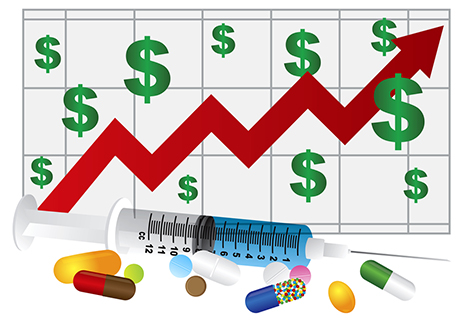Take one data point: Medicare breast cancer screening. You are not for breast cancer, right? No one is. Yet while breast cancer screening costs for Medicare patients skyrocketed between 2001 and 2009, there was no earlier detection of breast cancer.
Lots more taxpayer spending, no more value. But if you had objected to it, you would have been vilified. The new health care system may more of the same; a government subsidy for companies to sell lots of new equipment of suspect value - but if hospitals don't buy it, newspaper articles will come out saying 'X could have been saved if Corporations weren't too cheap to buy the latest Y'.

Image credit: Shutterstock
"Screening mammography is an important tool, but this rate of increase in cost is not sustainable,” said Dr. Brigid Killelea, assistant professor of surgery at Yale School of Medicine. “We need to establish screening guidelines for older women that utilize technology appropriately, and minimize unnecessary biopsies and over-diagnosis to keep costs under control.”
This is a no-win situation. If insurance companies, and the government, don't pay for it, they are creating a health care ghetto for older people and rationing medicine. If they do fund unnecessary tests, the system will go bankrupt.
The team behind a recent paper identified the use of newer, more expensive approaches including digital mammography and computer aided detection, as well as the use of other treatment tools and subsequent procedures such as breast MRI and biopsy, between 2001-2002 and 2008-2009. They also assessed the change in breast cancer stage and incidence rates between the two time periods.
They found that use of screening mammography was similar between the time periods — around 42% of female Medicare beneficiaries without a history of breast cancer. But in that time there was a large increase in the use of digital mammography technology, which is more expensive than standard film technology ($115 vs. $73 per mammogram) but has not been shown in clinical trials to be superior for women 65 years or older.
The team also found a considerable increase in the use of other newer, more expensive screening and related-adjunct technologies. As a result, Medicare spending for breast screening and related procedures increased 44%, from $666 million (in 2001-2002) to $962 million (2008-2009) - and that was before the Affordable Care Act went into effect.
“We need further studies to identify which women will benefit from screening, and how to screen effectively and efficiently,” said Dr. Cary Gross, professor of internal medicine at Yale School of Medicine, “But we cannot simply adopt new technologies because they theoretically are superior — the health system cannot sustain it, and more importantly our patients deserve a sustained effort to determine which approaches to screening are effective and which ones are not. In some instances, breast cancer screening can save lives. But no woman wants to undergo testing if it is likely to cause more harm than good.
Citation: J Natl Cancer Inst 2014; DOI: 10.1093/jnci/dju159. Source: Yale University.





Comments